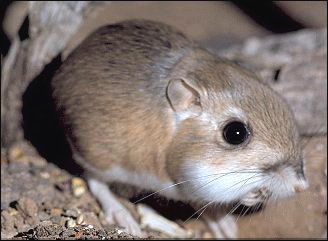

All of us are immigrants from the Old World. Those of us who are Native Americans admittedly arrived long before those of us with other backgrounds. But immigrants are we all. This is true also of many of our Chihuahuan Desert plants and animals—some from the distant past, some recent arrivals.
Some organisms, however, evolved here in the New World. The Pronghorn,
often called antelope, is the sole surviving species of a long line of uniquely
American herbivores. On the other hand, there are scores of living representatives of
the Geomyoidea, a strictly American group of rodents. This collection of related
species includes the pocket gophers, kangaroo rats, and pocket mice. Their center of
distribution is in the arid regions of the Southwest and Mexico, with only a relatively
few adventuresome species spreading to other parts of the continent. Although there are
notable differences between the burrowing gophers and the lightly built kangaroo rats
and relatives, all have inherited from their distant ancestor the pair of fur-lined
cheek pouches—hallmark of the Geomyoidea.

Contributor: Arthur H. Harris, Laboratory for Environmental Biology, Centennial Museum, University of Texas at El Paso.
Desert Diary is a joint production of the Centennial Museum and KTEP National Public Radio at the University of Texas at El Paso.

A kangaroo rat, a member in good standing of the Geomyoidea. Photographer: Dr. Lloyd Glenn Ingles. ©1999 California Academy of Sciences.